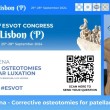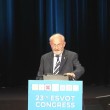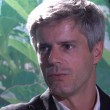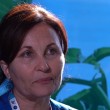
John Innes
Professor of small animal surgery
School of Veterinary Science
University of Liverpool
Leahurst Campus
Neston CH64 7TE, UK
John Innes qualified from University of Liverpool in 1991. He was at the University of Bristol for 10 years where is did his specialist training in orthopaedics and a PhD in canine osteoarthritis. He was then appointed Professor of Small Animal Surgery at Liverpool University in 2001. In 2009 he co-founded Veterinary Tissue Bank, Europe’s first veterinary tissue transplant supplier, and is a RCVS-registered specialist in small animal surgery (orthopaedics). He has published over 60 peer-reviewed papers and his current research projects are focussed around joint diseases. His clinical interests include all areas of small animal orthopaedics but particularly arthroscopy and joint replacement.
G.S-S.
After you took up your appointment at ‘Leahurst’, the University of Liverpool's Field Station, I know that you soon started to build a new hospital there. How did that come about?
J.I.
Liverpool has, for many years had a great reputation in equine and farm animal studies but, I think it is fair to say, that in the 1980s and 1990s, the small animal division had suffered from lack of investment; luckily orthopaedics was one of the few areas to still thrive with David Bennett and Chris May ‘in post’ at that time. However, new facilities were crucial to allow us to grow and develop and become an internationally competitive, multi-disciplinary teaching hospital. It took six years of hard work to secure University backing, find the funding, and plan and construct the building. The development moved our operations from downtown Liverpool to a green-field site, ‘Leahurst’, across the river Mersey on the Wirral peninsula. The site is in the grounds of the original Large Animal Filed Station, which opened in the mid-fifties for final year students to obtain clinical experience. We now have a wonderful clinic in a beautiful setting with lots of staff and great referred cases from all over the north of England and Wales. I must thank my colleagues at Liverpool who helped on that project – it was a big undertaking and they all worked really hard. However, it is really satisfying to now see young, aspiring veterinarians from all over the world applying to come to Liverpool to work and train as specialists in our small animal clinic at ‘Leahurst’. I think that is an indicator that we have turned the reputation around.
G.S-S.
Have you had time to get personally involved in research work and do you have post–graduate students working on projects of their own or with you and other senior clinicians?
Is there a particular theme to the work at ‘Leahurst’?
J.I.
Yes, I have been determined to keep my research portfolio moving and developing, but I will not pretend that that has not been tough whilst trying to develop the clinic too. However, Liverpool has had a good musculoskeletal research group in the veterinary school for a long time now and it continues to grow. We have several faculty members in the group including: three professors; we all work together to bring in research funding. Fortunately, we all get on well together – which is not always the case in academia! The academics in the group are a mixture of ‘bench scientists’ and clinicians; so we have that basic science support for molecular and cell biology that is so important. We have research assistants, post-doctoral workers and graduate students in the group and so we have a critical mass such that we can all help each other. Particularly strong themes in the laboratories are: osteoarthritis, ligament (canine) and tendon (equine) biology, and molecular genetics of veterinary diseases. For me, cruciate ligament biology remains a priority because it is such a common problem for dogs, but sometimes one has to go where the funding is: cartilage biology seems to attract more funding and so we also do a significant amount of work in that area. I have also become involved in bone and tissue banking and we are currently conducting research projects to support those areas. This has been another exciting area to get involved with and I have learned so much about the benefits of bone allograft products. Recently, we have been working with engineers on some biomechanics projects and have invested in our own materials-testing machine. So the facilities continue to expand and develop. Of course, we also carry out studies on clinical patients and have great facilities for those areas with a dedicated canine gait laboratory including: force platform and motion capture system and in-house advanced imaging modalities (CT, MRI, DEXA). That said, without funding, research cannot take place and I must acknowledge all of the individuals and organisations that have and continue to support our research, particularly our charitable and industrial partners.
As I alluded to at the start of this answer, in recent years it has been difficult for me to get into the laboratories myself. However, I am rectifying that right now, with five months research leave working with Dr. Chris Little at the ‘Raymond Purves Bone and Joint Research Laboratories’ at University of Sydney, Australia. Here I am learning more about canine synovial cells, animal models of musculoskeletal disorders, and gene silencing.
Along with my family, I am also experiencing Aussie life and enjoying the climate, beaches and atmosphere of Sydney!
Another major thing that helped me was that when I was offered the Chair in Surgery at Liverpool, I negotiated for an extra basic science faculty position in small animal musculoskeletal research. Dr Anne Vaughan-Thomas was appointed to that position; she worked tirelessly to support canine and feline orthopaedic research and mentor our graduate students. Anne was a great matrix biologist with particular interests in the minor collagens of cartilage. Sadly, she passed away in 2009 at the young age of 46, having succumbed to mammary cancer. We miss her enormously but we do not forget her tremendous contribution to matrix biology and her work for veterinary orthopaedic science.















